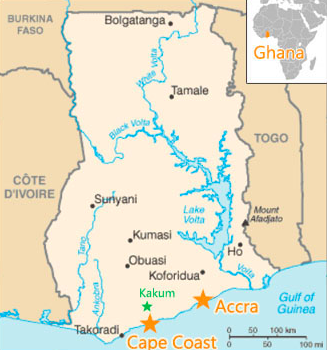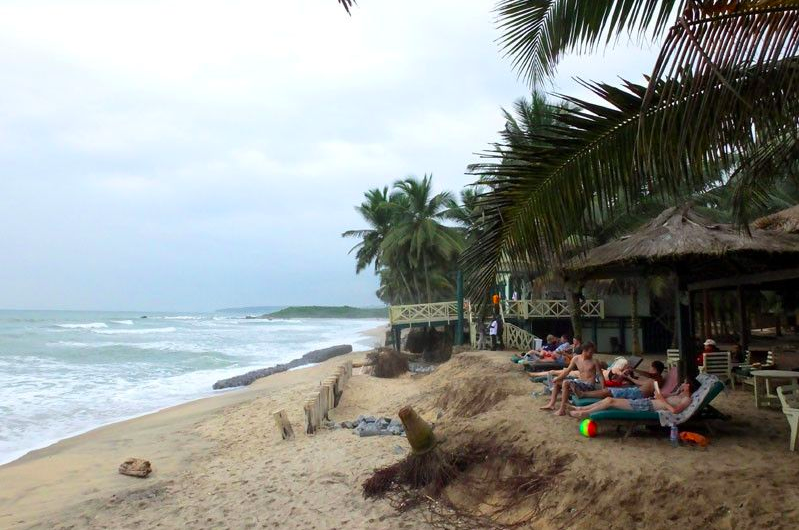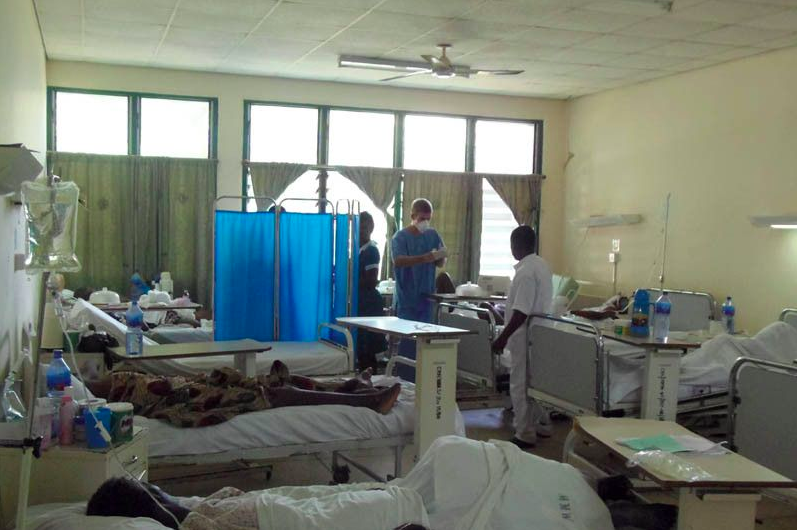Ghana is a country in West Africa, bordered by Ivory Coast to the west, Burkina Faso to the north, Togo to the east, and the Atlantic and Gulf of Guinea to the south.
Population estimate (2018): 29,734 million
Capital City: Accra
Currency used: Ghana Cedi
Gross National Income per capita (2013) (PPP international $): 3
Time zone: GMT + 0
Population growth rate (2018): 2.18%
Total fertility rate per woman: 3.9
Languages: English is an official language in Ghana, other common languages include: Asante 16%, Ewe 14%, Fante 11.6%, Boron 4.9%.
Key ethnic groups: Akan 47.5%, Daghani 17%, Ewe 14%, Ga-Adangbe 7%, Gurma (6%), Guan (4%), Gurunsi (2.5%), and Bissa (1%).
Religion: 71% Christian and 17% Muslim.
Literacy: 71.1%
Climate: Tropical with two main seasons; cold/wet and hot/dry. In the northern regions the rainy season is from March to end November, and from April to mid November in the southern regions. Temperatures range from 21ºc to 28ºc.The landscape also varies across the country with a low and sandy coast, scrub and plains in the south, rainforest and river streams in the central regions, and savannah, low bush and grass plains in the northern regions.
Healthcare system
There are three levels to the public healthcare system in Ghana; Tertiary, Secondary and Primary. The Tertiary level comprises Community Health Compounds (CHPS), health centres and small hospitals that provide medical first aid. Only outpatient treatment is offered at the tertiary level, and normally these centres are run by nurses. Each facility at this level aims to cover approximately 20,000 people.
At the Secondary level are district hospitals, where inpatient treatment is usually possible. Most of these hospitals have surgery theatres, a laboratory and up to around 100 beds. Medical care is normally better than that of tertiary level facilities. Each district hospital aims to cover approximately 100,000-200,000 people.
The Primary level comprises Metropolitan, Regional and Municipal hospitals. These hospitals are located in larger cities with populations exceeding 200,000 people. They have larger bed capacities, several surgery theatres, usually better technical equipment and various specialist physicians.
The primary level hospitals and many private hospitals are of high standards in terms of facilities, management and expertise. Secondary and Tertiary institutions are often underfunded.
Health statistics:
Life expectancy at birth (2016): 62/64 (male/female)
Probability of dying between 15 and 60 years: 262/222 (per 1000 population, 2016)
Total expenditure on health per capita (2014): $145
Number of doctors per 1000 population: 0.10
Nursing and midwifery personnel density (per 1000 population, 2017): 1.86
Neonatal mortality rate (per 1000 live births, 2016): 26.9 [20.2-35.8]
Maternal mortality ratio (per 100.000 live births, 2015): 319 [216-458]
Births attended by skilled health personnel (2014): 71%
Top 10 causes of death (2012):
Lower respiratory infections: 22.4 thousand people / 10.7% of total
Stroke: 18.3 / 8.7%
Malaria: 17.4 / 8.3%
Ischaemic hearth disease: 12.1 / 5.8%
HIV/AIDS: 10.3 / 4.9%
Preterm birth complications: 7.9 / 3.7%
Diarrhoeal diseases: 7.6 / 3.6%
Birth asphyxia and birth trauma: 7.3 / 3.5%
Meningitis: 6.3 / 3%
Protein-energy malnutrition: 6.2 / 2.9%
Distribution of causes of deaths in children under 5 (2013):
Malaria: 20% of total
Prematurity: 14%
Acute respiratory infections: 13%
Birth asphyxia: 12%
Diarrhoea: 8%
Neonatal sepsis: 7%
Congenital anomalies: 6%
Injuries: 5%
Measles: 1%
HIV/AIDS: 1%
Other causes: 13%




